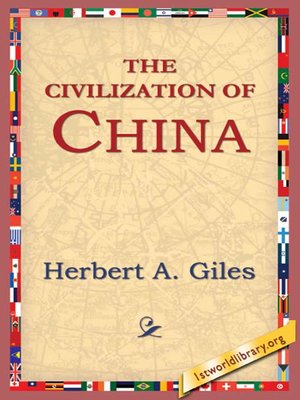
Sign up to save your library
With an OverDrive account, you can save your favorite libraries for at-a-glance information about availability. Find out more about OverDrive accounts.
Find this title in Libby, the library reading app by OverDrive.



Search for a digital library with this title
Title found at these libraries:
| Library Name | Distance |
|---|---|
| Loading... |
From the book:
It is a very common thing now-a-days to meet people who are going to "China," which can be reached by the Siberian railway in fourteen or fifteen days. This brings us at once to the question - What is meant by the term China? Taken in its widest sense, the term includes Mongolia, Manchuria, Eastern Turkestan, Tibet, and the Eighteen Provinces, the whole being equivalent to an area of some five million square miles, that is, considerably more than twice the size of the United States of America. But for a study of manners and customs and modes of thought of the Chinese people, we must confine ourselves to that portion of the whole which is known to the Chinese as the "Eighteen Provinces," and to us as China Proper. This portion of the empire occupies not quite two-fifths of the whole, covering an area of somewhat more than a million and a half square miles. Its chief landmarks may be roughly stated as Peking, the capital, in the north; Canton, the great commercial centre, in the south; Shanghai, on the east; and the Tibetan frontier on the west.
It is a very common thing now-a-days to meet people who are going to "China," which can be reached by the Siberian railway in fourteen or fifteen days. This brings us at once to the question - What is meant by the term China? Taken in its widest sense, the term includes Mongolia, Manchuria, Eastern Turkestan, Tibet, and the Eighteen Provinces, the whole being equivalent to an area of some five million square miles, that is, considerably more than twice the size of the United States of America. But for a study of manners and customs and modes of thought of the Chinese people, we must confine ourselves to that portion of the whole which is known to the Chinese as the "Eighteen Provinces," and to us as China Proper. This portion of the empire occupies not quite two-fifths of the whole, covering an area of somewhat more than a million and a half square miles. Its chief landmarks may be roughly stated as Peking, the capital, in the north; Canton, the great commercial centre, in the south; Shanghai, on the east; and the Tibetan frontier on the west.







